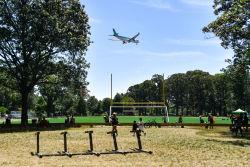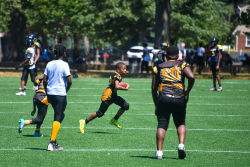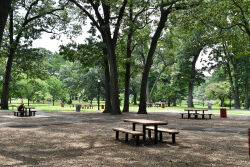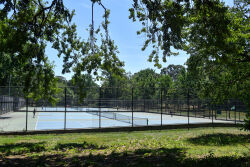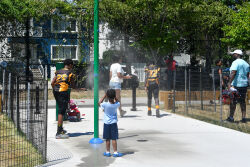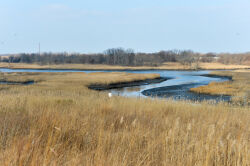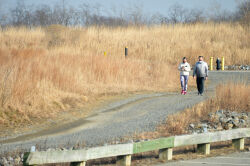Brookville Park
The Atlantic Flyway - Brookville Park
What was here before?
This area of Brookville was once Foster's Meadow, named after early settlers Christopher and Thomas Foster. The land was originally a sheep pasture on the western tip of Hempstead Plains in the 17th century. In the 18th and early 19th centuries, descendants of Dutch and English immigrants established a farming community here. The area’s ethnic identity began shifting in the 1850s with the arrival of German immigrants.
The population grew significantly after the Long Island Rail Road’s Foster’s Meadow station opened in 1871, linking the area to Long Island City and downtown Brooklyn At the site of Brookville Park, Forest Stream, also known historically as Simonson Creek was dammed in 1884 by Brooklyn Water Works, forming Conselyea’s Pond.. In 1890, a real estate company renamed the area Rosedale, possibly referring to wild roses along Francis Lewis Boulevard, though the exact origin of the name is unclear.
The completion of Sunrise Highway made the area more accessible, sparking suburban growth. By the 1920s, Irish immigrants had moved in, followed by Italian and Jewish families after World War II. In the 1980s, the neighborhood saw an influx of Caribbean immigrants, especially from Jamaica, Haiti, and Guyana.
How did this site become a park?
The pumping station at Conselyea’s Pond ceased operating in 1934 and eight years later, the land around the pond was acquired by NYC Parks. The layout of Brookville Park evoked earlier naturalistic landscapes found in Central Park and Prospect Park, with winding paths and two ponds used for boating and ice skating. In 1958 and 1962, the park was expanded to the south, protecting wetlands from development and connecting the park to the Idlewild Park Preserve.
Although the park’s ponds are no longer safe for ice skating, Brookville Park accommodates many other sports including tennis, basketball, handball and bocce. In 2001, the tennis courts were resurfaced and named in honor of Rosedale resident Derek Dilworth (1955-1999). An avid tennis player and park volunteer, he lobbied for the maintenance of Brookville Courts, repainted fences, purchased storage equipment, and obtained fish for the park’s pond. The first African American air traffic controller at John F. Kennedy International Airport, he often invited local children into his workplace on tours.
Brookville Park has seen several major improvements over the years. In 2007, the athletic field was upgraded with synthetic turf, The baseball field was rebuilt in 2011. In 2008, the Friends of Brookville Park was founded. The volunteer group is dedicated to improving the park and community through events, environmental projects, and student involvement.
In 2019, the picnic area and tennis courts were renovated and new barbecue grills, accessible picnic tables, improved paving and landscaping, sports lighting, and extra seating were added. In 2022, the synthetic turf football and baseball fields were reconstructed. Upgrades included a timber barrier rail, more drinking fountains, a new baseball backstop, additional bleachers, and new ADA-accessible paths.
What is this park named for?
Brookville Park’s name is derived from a stream that runs through it, which played a significant role in supplying water to Brooklyn in the second half of the 19th century. The namesake of Conduit Avenue on the park’s northern border, Brooklyn’s water supply originated from six dammed streams on the southern shore of Long Island.
Check out your park's Vital Signs
Clean & Safe
Green & Resilient
Empowered & Engaged Users
Share your feedback or learn more about how this park is part of a
Vital Park System

